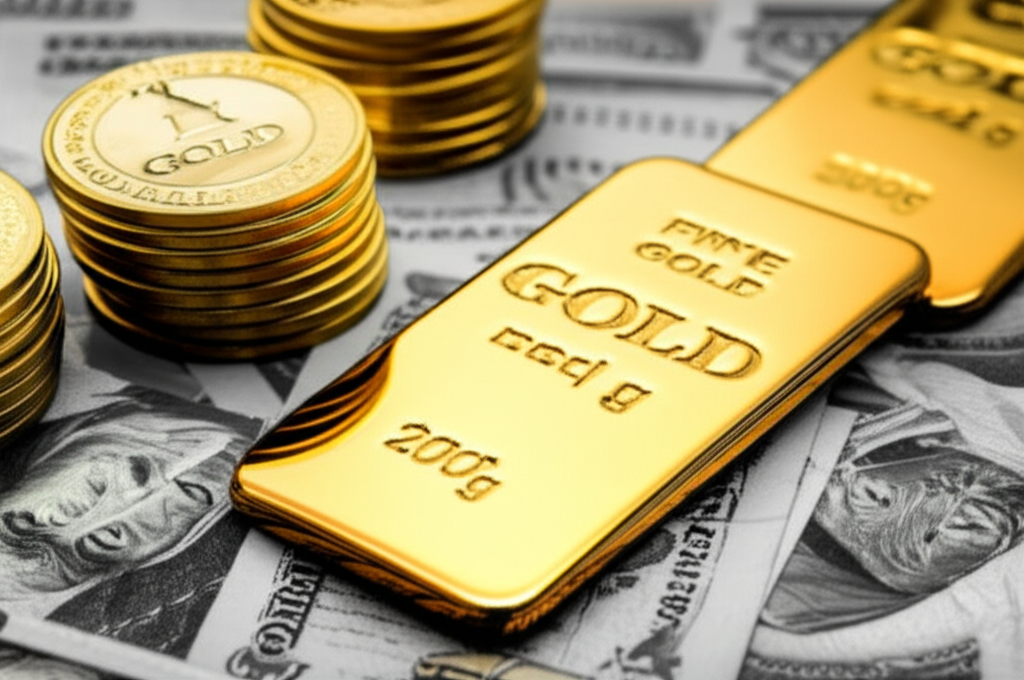Gold’s Corrective Phase Could Be Over as Uptrend Resumes
For many young investors navigating the complexities of global markets, gold has consistently held a unique allure as a safe-haven asset and a hedge against economic uncertainty. After a remarkable surge to all-time highs earlier this year, the precious metal experienced a noticeable pullback, entering what analysts termed a “corrective phase.” This period saw prices consolidate and dip, prompting questions about the sustainability of its rally. However, recent market dynamics and a confluence of macroeconomic factors now suggest that this corrective period might be drawing to a close, with the yellow metal potentially poised to resume its upward trajectory. Understanding the forces at play is crucial for anyone monitoring this ancient asset in a modern portfolio.
Gold’s journey through 2024 has been nothing short of eventful. It shattered previous records, briefly touching above $2,450 per ounce, driven by a potent mix of escalating geopolitical tensions, robust central bank demand, and anticipatory bets on impending interest rate cuts by major global economies. This rapid ascent, however, was followed by a natural period of profit-taking and consolidation. The corrective phase was largely influenced by a stronger-than-expected U.S. dollar, propelled by resilient economic data and a hawkish shift in Federal Reserve rhetoric, which pushed back expectations for significant rate cuts. Higher U.S. Treasury yields also made non-yielding gold less attractive, as the opportunity cost of holding the metal increased. Consequently, gold retreated from its peaks, testing key support levels and prompting a degree of investor caution.
Despite this recent retracement, several fundamental and technical indicators are now signaling a potential reversal of this corrective trend. Geopolitical instability remains a primary catalyst for gold’s safe-haven appeal. Ongoing conflicts in Eastern Europe and the Middle East continue to simmer, creating an environment of heightened global uncertainty. Such scenarios historically drive investors towards assets perceived as reliable stores of value, with gold consistently topping that list. Furthermore, central banks globally are showing no signs of slowing down their gold acquisition spree. Data from the World Gold Council consistently highlights significant net purchases by central banks, driven by diversification efforts away from traditional reserve currencies and a desire to bolster national financial resilience. This institutional demand provides a strong underlying bid for the metal, creating a solid floor for prices even amidst broader market volatility.
Looking ahead, the monetary policy landscape, while still somewhat ambiguous, also presents a bullish case for gold. While the timing of interest rate cuts by the U.S. Federal Reserve has been pushed back, the consensus remains that cuts are on the horizon later this year or early next. A loosening of monetary policy generally weakens the U.S. dollar and reduces bond yields, both of which are favorable for gold. Lower yields decrease the opportunity cost of holding gold, making it more competitive against interest-bearing assets. Moreover, persistent inflationary pressures in some economies, or the risk of their resurgence, could reignite gold’s role as an inflation hedge. Should economic growth falter globally, or if recessionary fears re-emerge, gold stands to benefit significantly from increased safe-haven demand. Technically, gold has demonstrated remarkable resilience, finding strong support around key psychological and historical price levels during its recent dip, suggesting that a strong base has been established from which a renewed uptrend could launch.
In conclusion, while the recent corrective phase served as a necessary cooling-off period after gold’s explosive rally, the underlying drivers that initially propelled its ascent appear to be reasserting their influence. The persistent geopolitical risks, unwavering central bank demand, the eventual shift towards looser monetary policy, and enduring inflation concerns all combine to paint a compelling picture for gold’s future. For young adults keeping an eye on their financial future, understanding these dynamics is key to recognizing gold’s potential not just as a volatile commodity, but as a strategic component in a diversified investment outlook, ready to shine once more as its uptrend potentially resumes.





